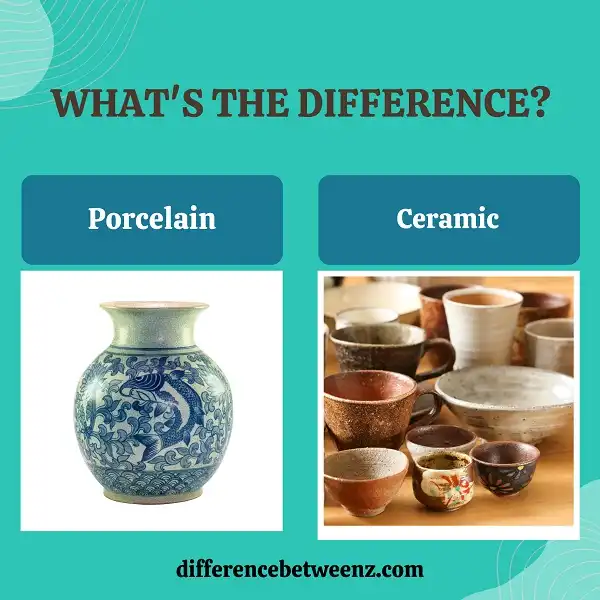Porcelain vs. Ceramic
What is the difference between porcelain and Ceramic? Both ceramic and porcelain are made of clay, sand, and other related natural materials.
Such materials are often used to make the required solution at the time of adding color.
This solution is made and used according to the shape and pattern of porcelain or ceramics.
In both cases it is necessary that they are subjected to high temperatures at the time of their elaboration, hence they are taken to a type of oven designed for such purposes.
The time taken for the preparation of ceramics or porcelain will depend to a large extent on the materials used to create them.
However, although porcelain and ceramics are similar in essence, they are not exactly the same; therefore, it is important to know what the difference is.
Difference between Porcelain and Ceramic
If you have doubts about it or just want a little more information on this subject, continue reading,
because then we explain to you the difference between porcelain and ceramics.
Porcelain
Porcelain is subject to a higher temperature and pressure at the time of its elaboration, to make it more dense and hard.
In the same way, the clay used to make porcelain is usually more refined and pure.
Porcelain absorbs little water (barely 0.5%), reducing the chance of cracking or staining.
Thanks to its low porosity it is ideal to place it in places with high levels of humidity, as well as for places where the temperature is cold.
Ceramics
In addition to being more used than porcelain, ceramic covers a wider field of application.
It is usually made using clay, stoneware, and even porcelain.
The variety of uses of ceramics ranges from buildings floors, walls, to ceilings.
However, its resistance is a little lower compared to porcelain.
It is less flexible and lasts less time than the latter (the detail of the durability will depend very much on the materials that are used in its elaboration).
Likewise, ceramics are easier to cut than porcelain and often also more porous.
Its price in the market depends on the type, although in general, it is cheaper than porcelain.
Finally, porcelain does not have as much variety in terms of types.
The reason for this is that although porcelain is included within the category of ceramics, it is considered a particular and distinctive mark.
Their classification has to meet certain standards and meet specific requirements.
Comparison Table
| Porcelain | Ceramic |
| Porcelain is quite Expensive | Ceramic is less expensive |
| Porcelain is more durable compared to Ceramic |
Ceramic is less durable compared to porcelain |
| Porcelain has a higher Kaolin value | Ceramic has a lower Kaolin value |
| Porcelain is denser than ceramic and its tiles are difficult to cut. | Ceramic is less dense and can be easily cut |
| Porcelain is a ceramic made by the fusion of clays. | Ceramic is an amorphous, inorganic and semi-crystalline solid |


